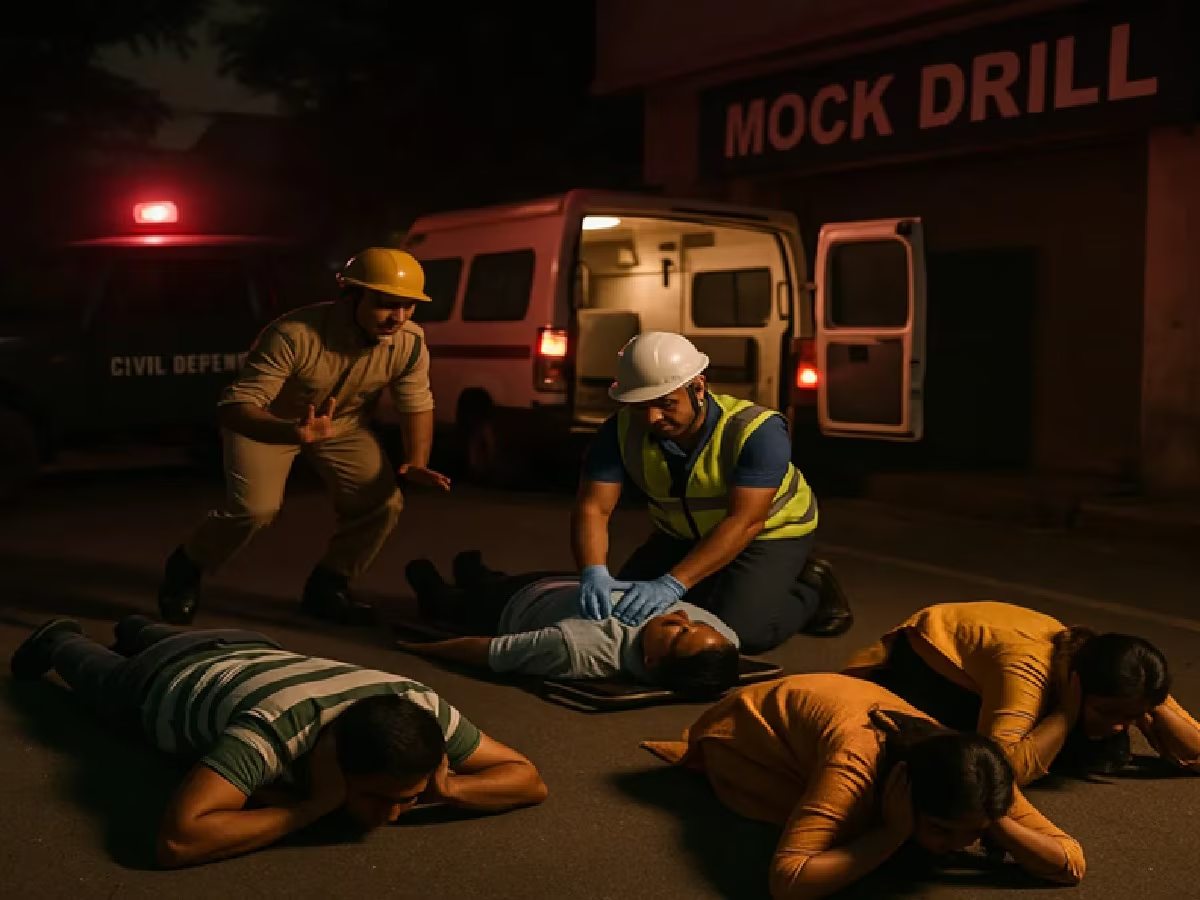The tension between India and Pakistan is once again at its peak. After the recent terrorist attack in Pahalgam, India has retaliated by air strikes. Meanwhile, a large mock drill is being organized in 244 districts of the country on 7 May. This mock drill is part of national preparations to deal with war, air strike or any serious emergency. The purpose of this practice is to ensure that if there is a big threat to the country, how will the civil, administration and security agencies deal with it.
What is a mock drill?
Mock drill is a kind of pre -planned exercise, in which situations such as war or bombing are repeated in a simulated form to see what the country’s reaction would be under real circumstances. Civil defense, local police, paramilitary forces, health departments, firefighters and central agencies participate in this exercise. It is being organized under the supervision of the Ministry of Home Affairs. Mock drill is a kind of practice as to how and where everyone has to hide if the attack occurs.
Jaishankar’s response to ‘Operation Sindoor’
This time mock drills are being done in 244 districts, out of which about 100 are placed in sensitive category. These districts are divided into three categories. Category 1 includes the districts that are considered highly sensitive, such as Bulandshahr, where the nuclear power plant is located. Category 2 and 3 include medium and less sensitive districts. The strategy has been decided on the basis of different situations in all districts.
What will happen in mock drill and what to do?
During the mock drill, sirens will be played to warns people of air strikes, power and mobile networks may be shut down for some time and a blackout -like situation in cities. Emergency teams will teach people where to hide in such a situation, whom to contact and what to keep with them, such as drinking water, essential medicines, flashlight and radio. Radio will be a special medium as it can broadcast government information even without internet or mobile network. Another important aspect of this drill is that it will include public announcements, traffic diversion, fake attack scenes, exercise to remove the injured and withdrawal schemes. With this, ordinary citizens will be able to know in which direction they should go in the real crisis, where will the safe place be and which government agency will help. During the practice, it is also being told that if someone is injured, then how to pick him up on the shoulder or to the hospital by other means. At the same time, if there is a fire from explosives during the war, then how to extinguish the fire.
What is a blackout during mock drill?
Blackout will also be done during the mock drill. During this mock drill, there will be a blackout of 2 hours from 7 pm, that is, it will be completely dark. This means that during this time lights of all houses, institutions and roads will be closed, so that the eyes of the enemy can be avoided. Along with this, siren will also be played as a warning. On hearing the siren, people should be cautious and should go to safe places such as bunkers, safe rooms or stay away from open places. Mock drills performed for circumstances like war are more serious than normal disaster management exercises.
In the mock drills conducted during the war, the police have all the power of 188 in the commissioner like Delhi, Ghaziabad. Whereas in other cities where there is no commissioner, the District Magistrate has all the power. Also, in the possibility of war, central agencies are in touch with the local police. Through this exercise, the government and ordinary citizens get the experience of how a situation like war or a major terrorist attack can be dealt with patience and plan. Mock drill is not just a warning practice, it is an important part of national security preparation, which ensures that the country is always ready for any crisis.
